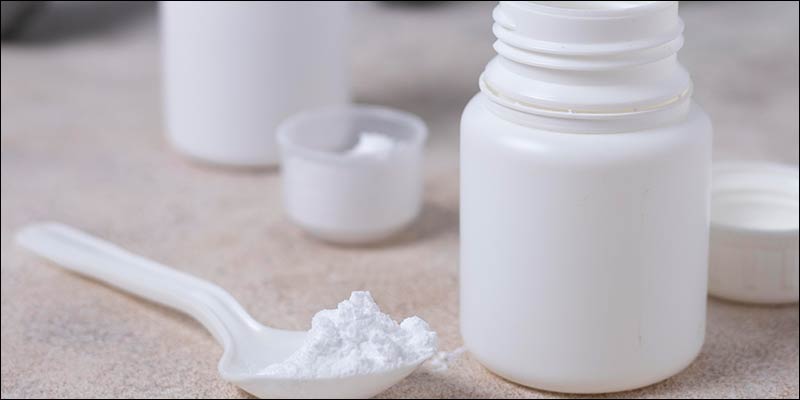Creatine supplements have become increasingly popular among athletes, bodybuilders, and fitness enthusiasts. But what is creatine, and does it truly live up to the hype? In this blog, we’ll explore the world of creatine before and after its use and discover the science, benefits, and potential side effects associated with this popular supplement.
Introduction
Before delving into the transformational journey of creatine before and after usage, let’s start with the basics. Creatine is a naturally occurring compound found in small amounts in certain foods and synthesized by the body. It plays a crucial role in providing energy during short bursts of intense physical activity, making it a popular choice for those looking to boost their exercise performance.
What is Creatine?

Creatine is a naturally existing compound primarily located in our muscles and brain. This amino acid derivative is present in limited quantities in specific foods, particularly meat and fish, and is also created within our bodies. It plays a crucial role in supporting energy production, particularly during high-intensity, short-duration activities like weightlifting, sprinting, or jumping. The body’s ability to generate and utilize creatine is especially essential for athletes, bodybuilders, and individuals engaged in consistent physical training.
The Science Behind Creatine
To understand the transformation that can occur with creatine, it’s essential to grasp the science behind it. When you take creatine supplements, you increase the phosphocreatine stores in your muscles, enabling you to perform better during intense workouts. This leads to improved strength, power, and overall athletic performance.
Benefits of Taking Creatine

Muscle Fullness
One of the initial and most noticeable outcomes of supplement use is an expansion in muscle size. Initially, this doesn’t necessarily indicate muscle growth but is linked to creatine’s ability to draw water into muscle cells, giving them a fuller appearance.
Enhanced Workout Performance
With time, individuals generally observe enhanced performance in high-intensity activities like weightlifting and sprinting when using supplement. This improvement arises from creatine’s capacity to restore ATP reserves, which serve as the primary energy source for such endeavors.
Quicker Recovery
Another frequently reported benefit is a decrease in post-workout muscle soreness and quicker recovery periods. This often paves the way for more frequent and potentially more productive training sessions.
Muscle Growth
As a consequence of enhanced workouts and quicker recovery, the indirect outcome of prolonged usage is muscle development. While not immediate, this progress becomes increasingly noticeable over several months of consistent training and creatine consumption.
Brain Health
Recent research suggests that creatine may also have cognitive benefits, potentially enhancing memory and cognitive function. While this is still an emerging field of study, it adds another layer of intrigue to this supplement.
How to Take Creatine
Before you witness the magic of this supplement before and after, it’s essential to know how to use it effectively. Supplement is typically consumed as a supplement in the form of creatine monohydrate. A common dosage is 3-5 grams per day, but it’s essential to follow the recommended guidelines on the product label.
Creatine Before and After Workout

The timing of when to take creatine has been a subject of discussion. Some studies propose that consuming creatine after a workout may be slightly more advantageous because of the heightened blood flow and nutrient absorption by the muscles, contributing to recovery and muscle growth. Conversely, taking supplement before a workout is believed to enhance exercise performance. In the end, the variation in outcomes based on timing is minimal. Therefore, the best time for supplement powder intake should be determined by personal preference and how one’s body reacts to it.
Preparing for Creatine Use
Before you embark on your supplement journey, it’s crucial to consult with a healthcare professional, especially if you have any underlying health concerns. It’s also advisable to stay well-hydrated when using this, as it can affect fluid balance in the body.
Creatine Before and After: Does it Work?
Now, the moment you’ve been waiting for. Does this live up to its reputation? The answer is a resounding yes, but the results may vary from person to person. Many users have reported significant improvements in their exercise performance, increased muscle mass, and better overall fitness levels after using creatine.
Real-Life Success Stories
To give you a better perspective on the transformative effects, let’s take a look at some real-life success stories:
Mike’s Journey: Mike, a dedicated weightlifter, saw a remarkable increase in his bench press and squat performance after starting supplementation. He credits his improved strength and endurance to creatine.
Linda’s Story: Linda, a competitive sprinter, noted a reduction in her race times after using supplements, allowing her to gain a competitive edge.
These are just a few examples of individuals who have witnessed incredible changes in their fitness journey.
Creatine and Exercise Performance
The link between supplement and exercise performance is well-documented. Athletes and fitness enthusiasts often experience the following benefits:
- Enhanced muscle power
- Increased endurance
- Quicker muscle recovery
Creatine Before and After Women

While the majority of creatine research has primarily involved men, there is evidence suggesting that women can also derive benefits from creatine supplementation. Similar to men, women may experience notable muscle creatine accumulation and performance improvement with creatine monohydrate. Nevertheless, certain studies indicate minimal to no discernible advantages.
In general, extended usage of creatine appears to positively impact strength in women. However, the current body of evidence indicates limited benefits for women in the short term (less than 28 days) concerning anaerobic power, including aspects such as sprinting performance or high-intensity interval training (HIIT).
Creatine and Muscle Growth
If you’re looking to bulk up, this may be your secret weapon. It can lead to:
- Increased muscle fiber size
- Greater muscle protein synthesis
- Improved muscle hydration
Creatine and Brain Health
Emerging research suggests that supplement may offer cognitive benefits. It may help with:
- Enhanced memory and cognitive function
- Reduced mental fatigue
- Protection against neurodegenerative diseases
Potential Side Effects
While this supplement is generally safe, it’s essential to be aware of potential side effects, such as:
- Gastrointestinal discomfort
- Water retention
- Muscle cramps
Consult with a healthcare professional if you experience any adverse effects.
What Happens After One Month of Creatine
After maintaining a regular powder supplementation routine for one month, the muscles become fully saturated with the compound, optimizing its potential advantages. During this period, individuals commonly experience significant improvements in strength, accelerated recovery post-workout, and diminished muscle soreness. Any initial weight gain attributed to water retention typically levels off by this point, and the body adapts to the supplement, minimizing or eliminating early side effects such as stomach discomfort.
Conclusion
In conclusion, creatine is a valuable supplement that can lead to impressive transformations in exercise performance, muscle growth, and even cognitive function. When used responsibly and in conjunction with proper training and nutrition, powder can be a game-changer for individuals striving to reach their fitness goals.
FAQs
Q1. How Long Does Creatine Take to Show Results?
Consuming a modest daily dosage of approximately 3-5 grams can lead to improved strength and endurance within 2-4 weeks. Alternatively, if you choose to do a creatine loading phase, taking 20-25 grams daily for 7 days, followed by a lower maintenance dose, may yield results in as little as 5-7 days.
Q2. What happens after 1 week of creatine?
In a research study, a one-week period of high-dose powder supplementation (20 grams per day) resulted in an increase in participants’ body weight of approximately 2 to 6 pounds (1 to 3 kilograms). Furthermore, long-term research indicates that individuals who use powder may experience a more significant ongoing increase in body weight compared to those who do not use creatine.
Q3. Is it good to take creatine before and after?
Research suggests that on days when you engage in workouts, it’s advisable to consume powder shortly before or after your exercise session, as opposed to taking it a significant amount of time before or after the workout. On rest days, taking powder with food can be advantageous, although the specific timing may not be as critical as it is on exercise days.
Q4. Is creatine suitable for everyone?
This is generally safe for most people. However, individuals with kidney or liver issues should consult a healthcare professional before use.
Q5. How long does it take to see results?
Results vary, but some users report improvements in as little as two weeks.
Q6. Can I take this with other supplements?
Yes, this can be safely used in combination with other supplements like protein and amino acids.

